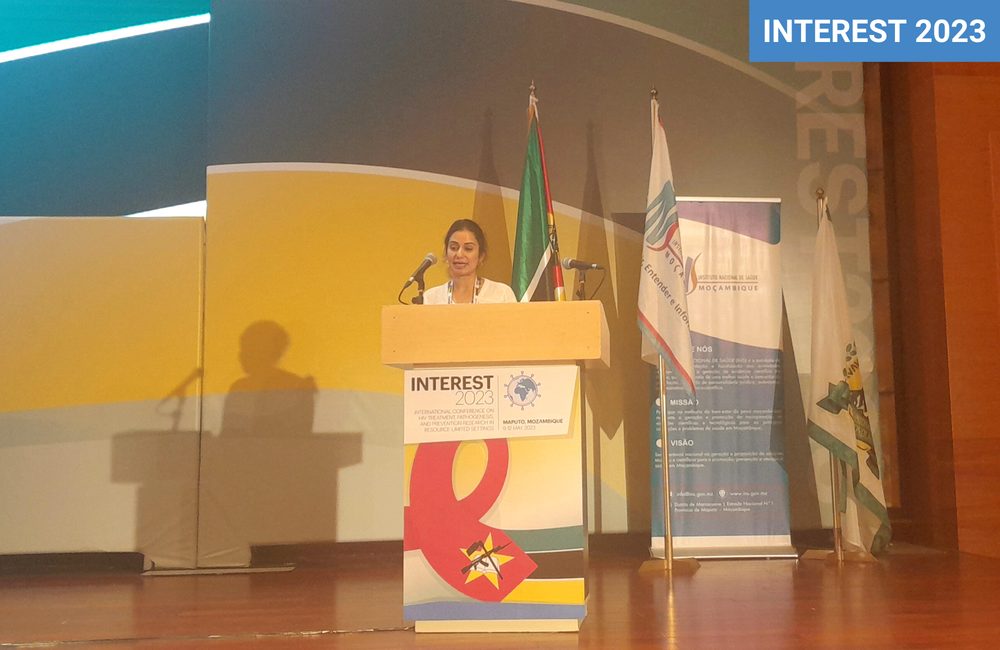
Despite low screening rates, 42% of South African female sex workers with HIV were found to have high-risk pap tests – meaning they showed signs of developing cervical cancer, the INTEREST 2023 conference in Maputo, Mozambique heard this week.
"The prevalence of cervical cancer precursor lesions in this cohort of mostly HIV-positive sex workers was higher than the range reported for African women at 5-30%, with low screening uptake," said Dr Avania Bangalee from the University of the Witwatersrand, Johannesburg.
Cervical cancer, caused by human papillomavirus (HPV), is the second most common cancer and the leading cause of cancer-related deaths among South African women.
Female sex workers living with HIV have a high risk of acquiring cervical cancer due to the nature of their work and compromised immunity, especially when not adhering to HIV treatment and if having condomless sex.
The researchers used pap tests from a sex-worker-dedicated health centre in Johannesburg between June 2019 and September 2022 for their analysis.
The women's uptake of cervical cancer screening was only 4% (121 out of 2880), and the investigators included 104 satisfactory pap tests in the final analysis.
Those tested had a median age of 34, with an average of three years in sex work. Most (71%) were HIV positive, and many (68%) reported consistent condom use with male clients.
Precursor lesions were reported in 39% of the pap smears; of these, precursor lesions occurred in 42% of tests from HIV-positive sex workers.
Dr Bangalee explained to the conference that the low screening uptake among sex workers was mostly due to an inadequate understanding of the disease, time constraints for sex workers and health provider attitudes at the facilities.
A Kenyan study also presented at the conference by Dr Maureen Akolo from the Partners in Health and Development in Africa, investigated the factors influencing cervical cancer screening uptake among female sex workers with HIV in Kenya.
Structured questionnaires were administered to 150 women seeking HIV services at a sex workers outreach programme in Nairobi, where free cervical cancer screening was held.
The largest group (39%) were between 18 and 25 years, 21% were between 25 and 30 years,18% were between 30 and 35 years, and 11% were above 40.
On cancer screening knowledge, 57% said it's a procedure to examine the cervix for any disease, with only 21% saying it identifies abnormal cells in the cervix.
Most (62%) were uncomfortable with being screened for cervical cancer, 37% feared the outcome, 67% feared the procedure's pain, while 53% said cervical cancer was a terminal illness and, therefore, there was no need to be screened. Regarding cultural beliefs, 84% said they fear stigma from the community, while 16% said cervical cancer does not exist.
The researchers concluded that female sex workers should be targeted with cancer screening messages and tailored screening services at convenient times and locations.
In 2020, the World Health Organization set three targets to support eliminating cervical cancer as a public health problem. Countries should aim to vaccinate 90% of girls against HPV by the age of 15, ensure that 70% of women receive two screening tests (including testing for HPV) at the ages of 35 and 45, and provide treatment for 90% of women with precancerous lesions or cervical cancer.
The conference also heard from Professor Lloyd Mulenga from the University of Zambia on how the country – which has the third highest incidence rate of cervical cancer in the world – has integrated HPV prevention into HIV care.
At the national level, the country has developed national policy guidelines and quality assurance; they have also built capacity through training and supervising providers. At the facility level, cervical screening and immediate treatment of precancerous lesions are provided by trained nurses and midwives at HIV clinics. At the community level, there is outreach and strengthening of referral mechanisms.
Community outreach included advocacy and awareness for church groups, engagement with traditional leaders, community education seminars and village-based screening.
Based on these interventions, Professor Mulenga reported that cervical cancer deaths had been prevented in 6572 HIV-positive women from 2006 to 2008 and said the same trend was still being seen today. A range of one cervical cancer death is prevented for every 28 to 68 HIV-positive women screened.
However, some of the challenges seen in integration included having to create separate data registries at each service delivery point, the lack of an integrated health management system that prevented providers from collecting client-level data, inadequate funding, staff fatigue and limited access to target populations.
To improve messaging, he called for implementing context-specific communication strategies using social media, television, mass gatherings and print media. Additionally, debunking myths associated with vaccination and screening was a vital messaging element, and integrating vaccination in school reproductive health plays and dramas.
Bangalee A et al. Sex Workers and the Pap Test: Abnormal Cervical Cytology Patterns in a Cohort of Unvaccinated Sex Workers Attending an HIV-Dedicated Health Centre in Johannesburg, South Africa. INTEREST 2023, Maputo, abstract 25, 2023.
Akolo M et al. Cervical Cancer Screening Uptake Among Female Sex Workers Living With HIV-a Crossectional Survey in Nairobi, Kenya. INTEREST 2023, Maputo, abstract 3, 2023.
Update: The headline of this article was corrected on 15 May 2023. The figure is for the prevalence of cervical cancer precursor lesions, not of cervical cancer (which is much rarer).


